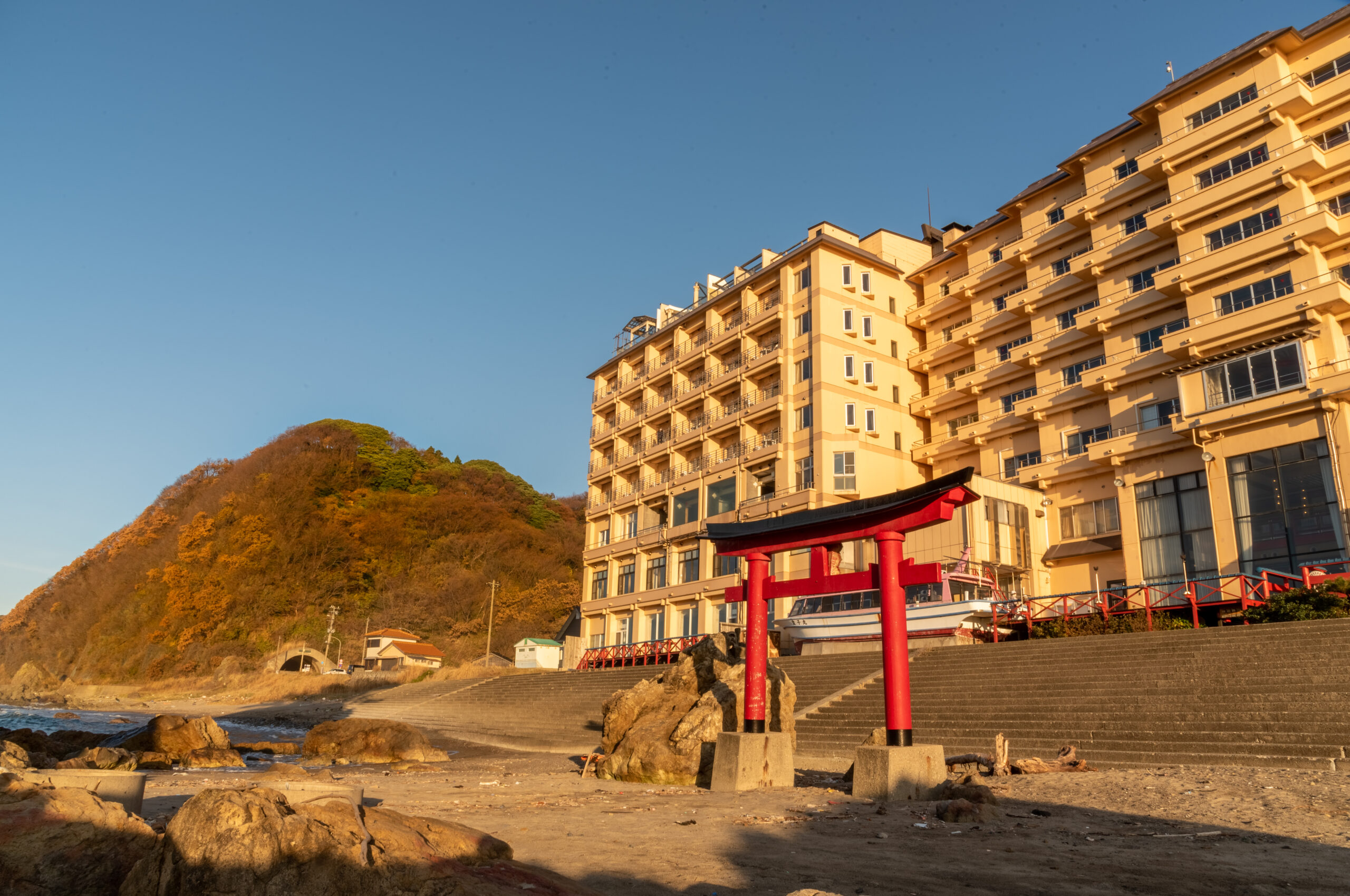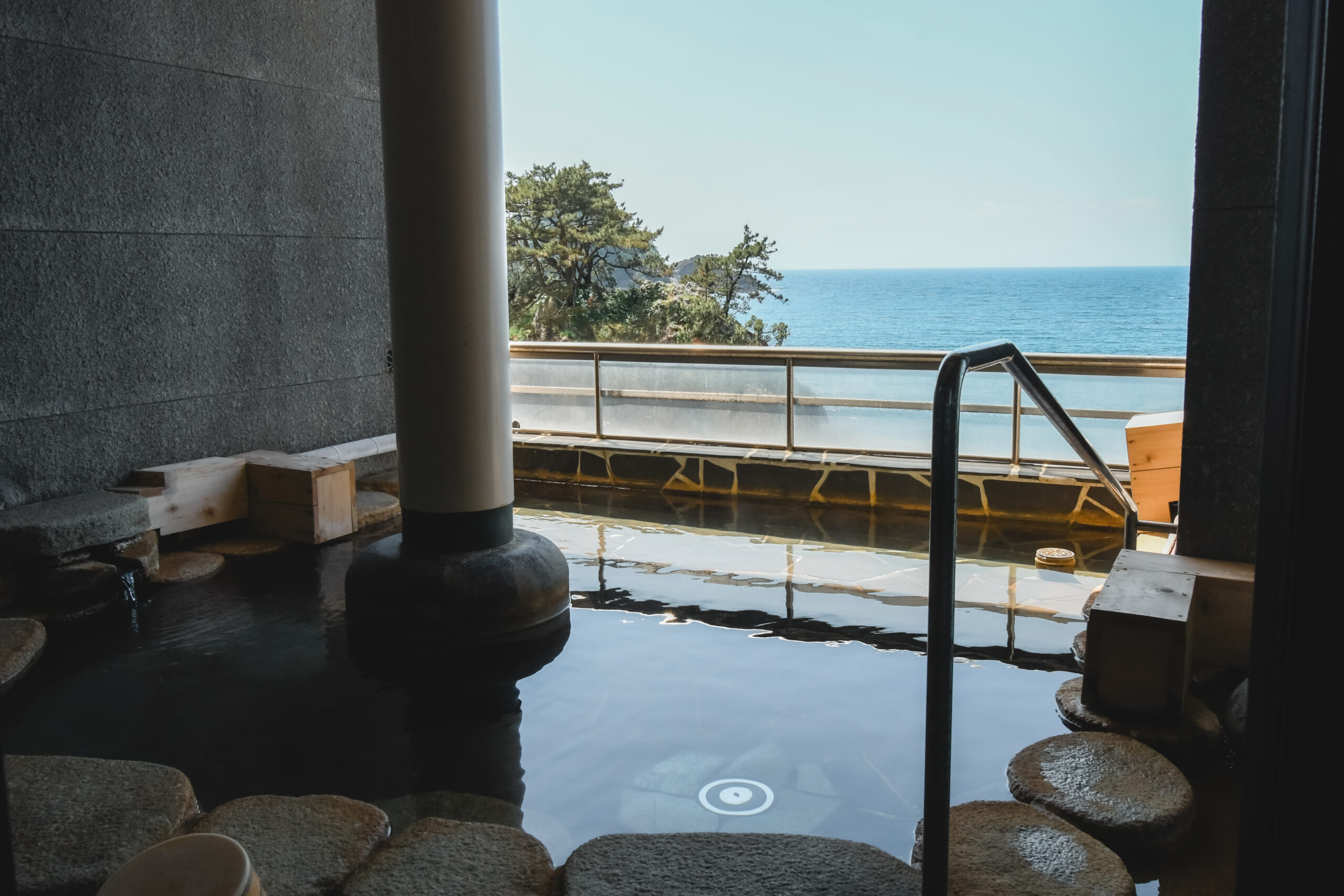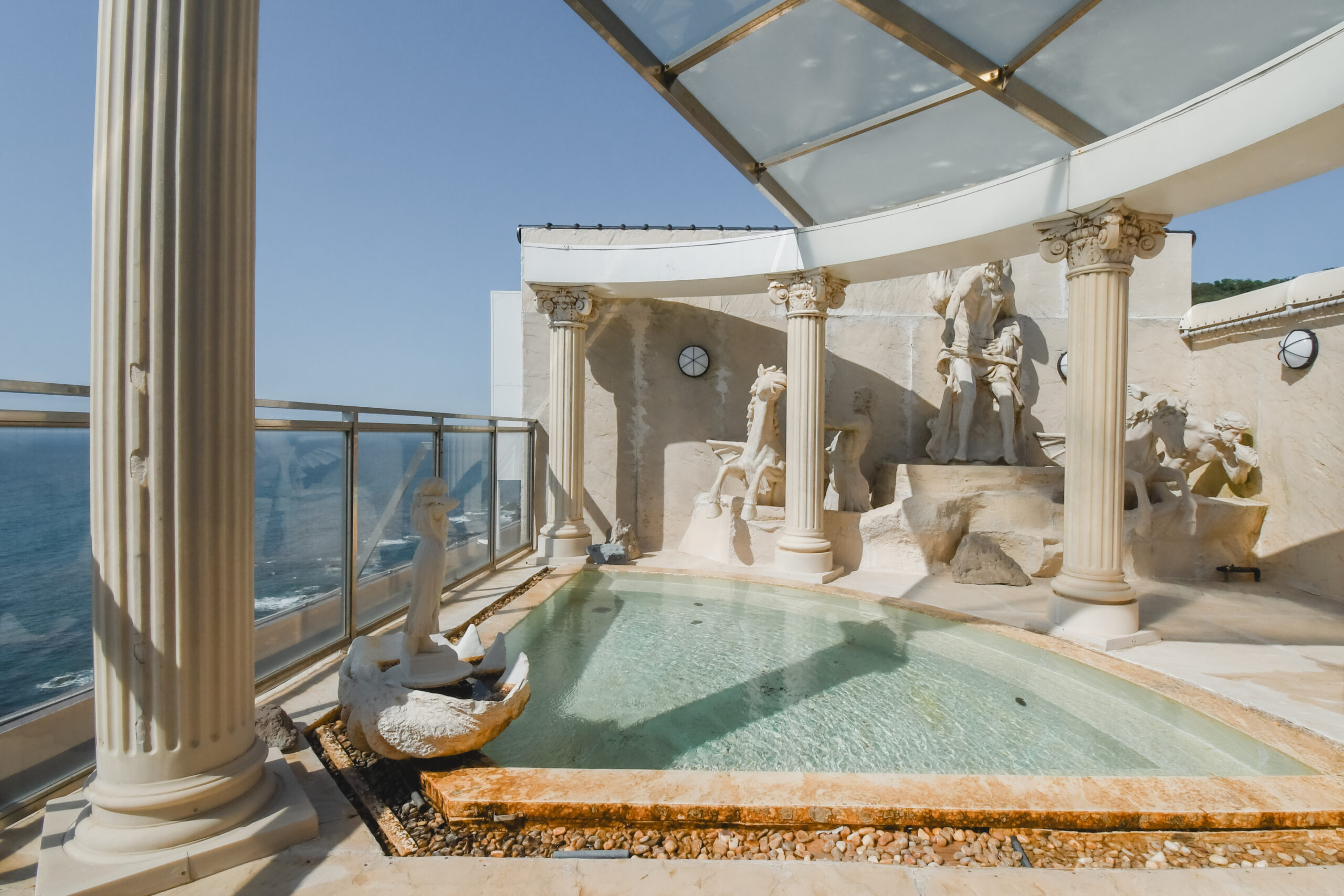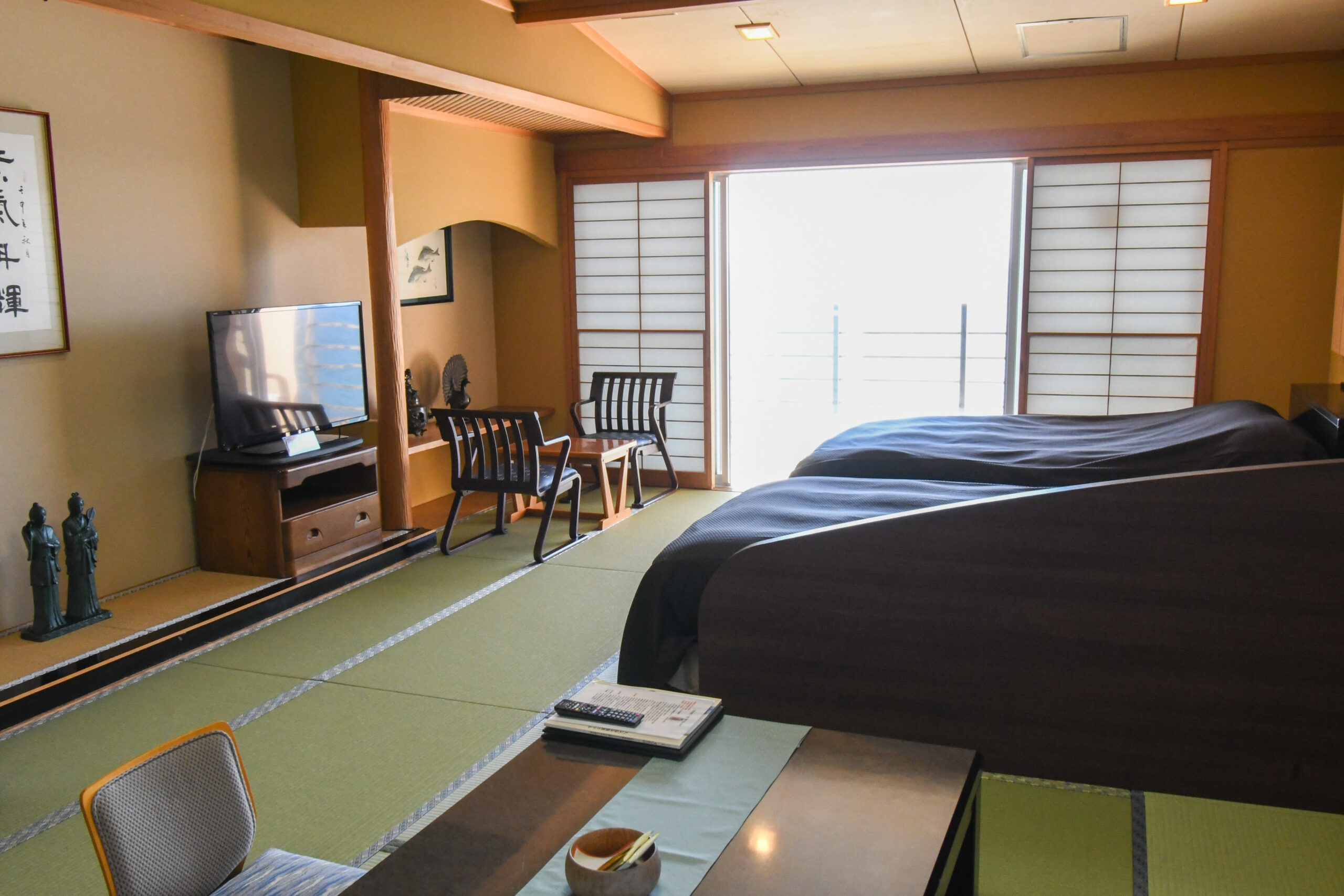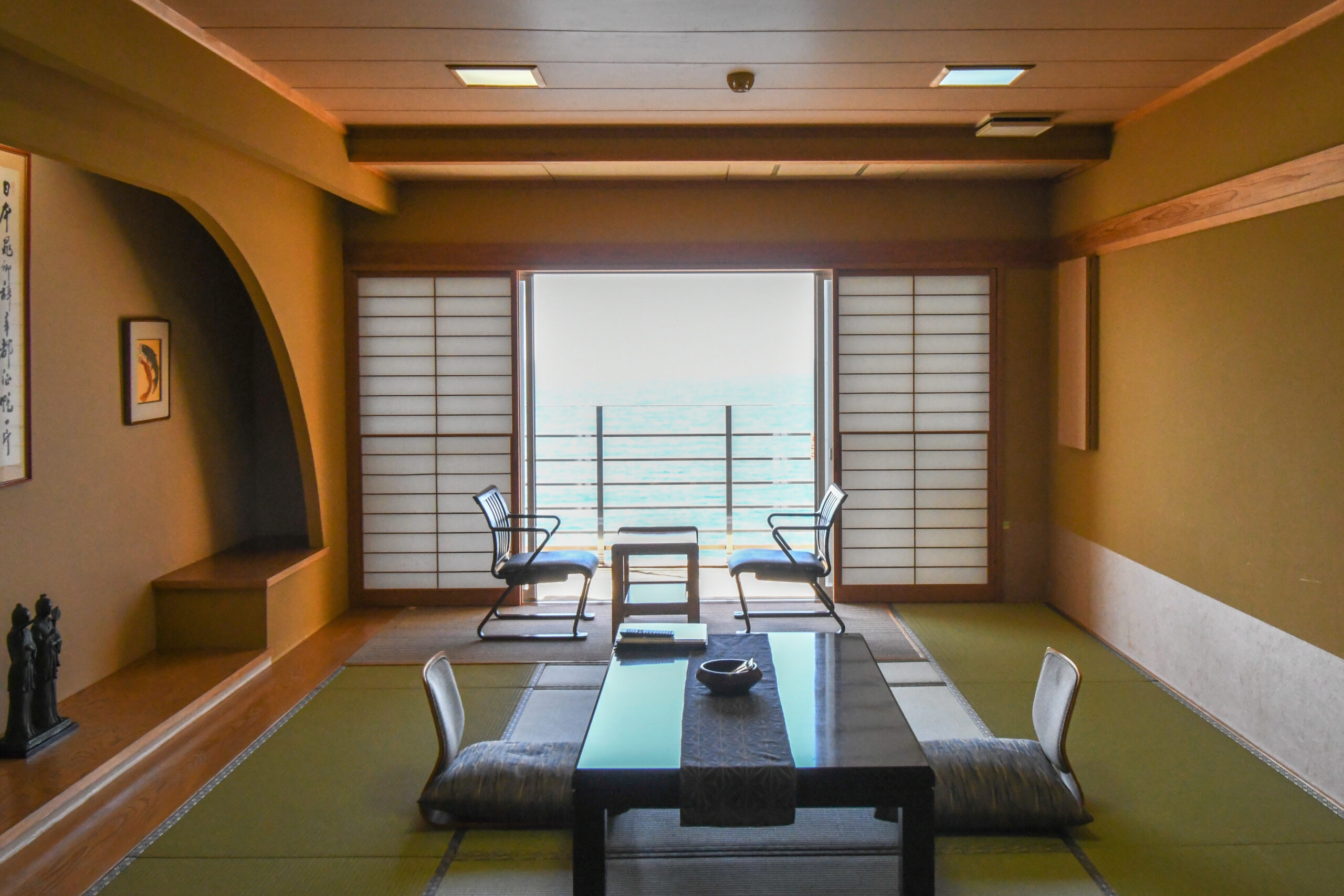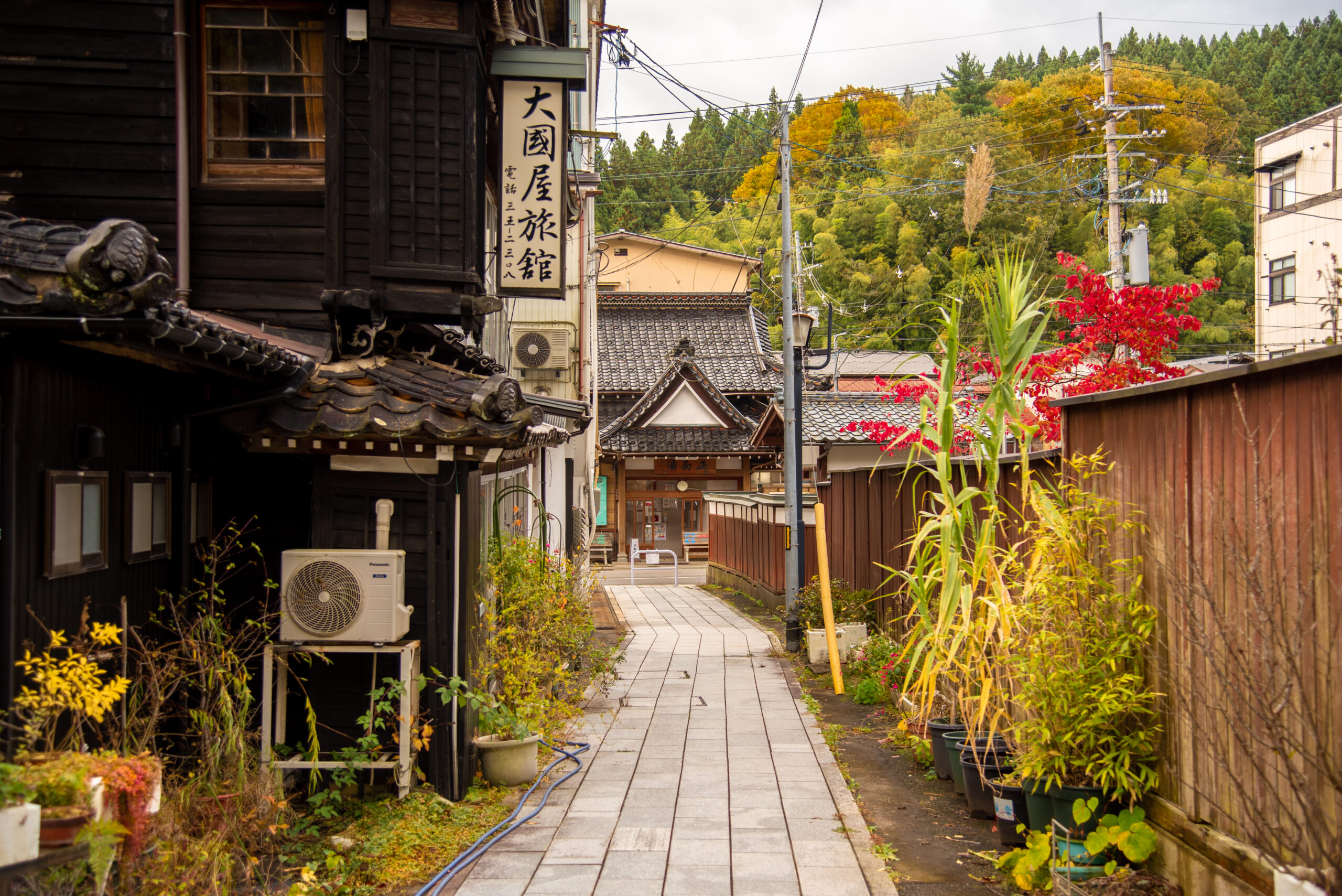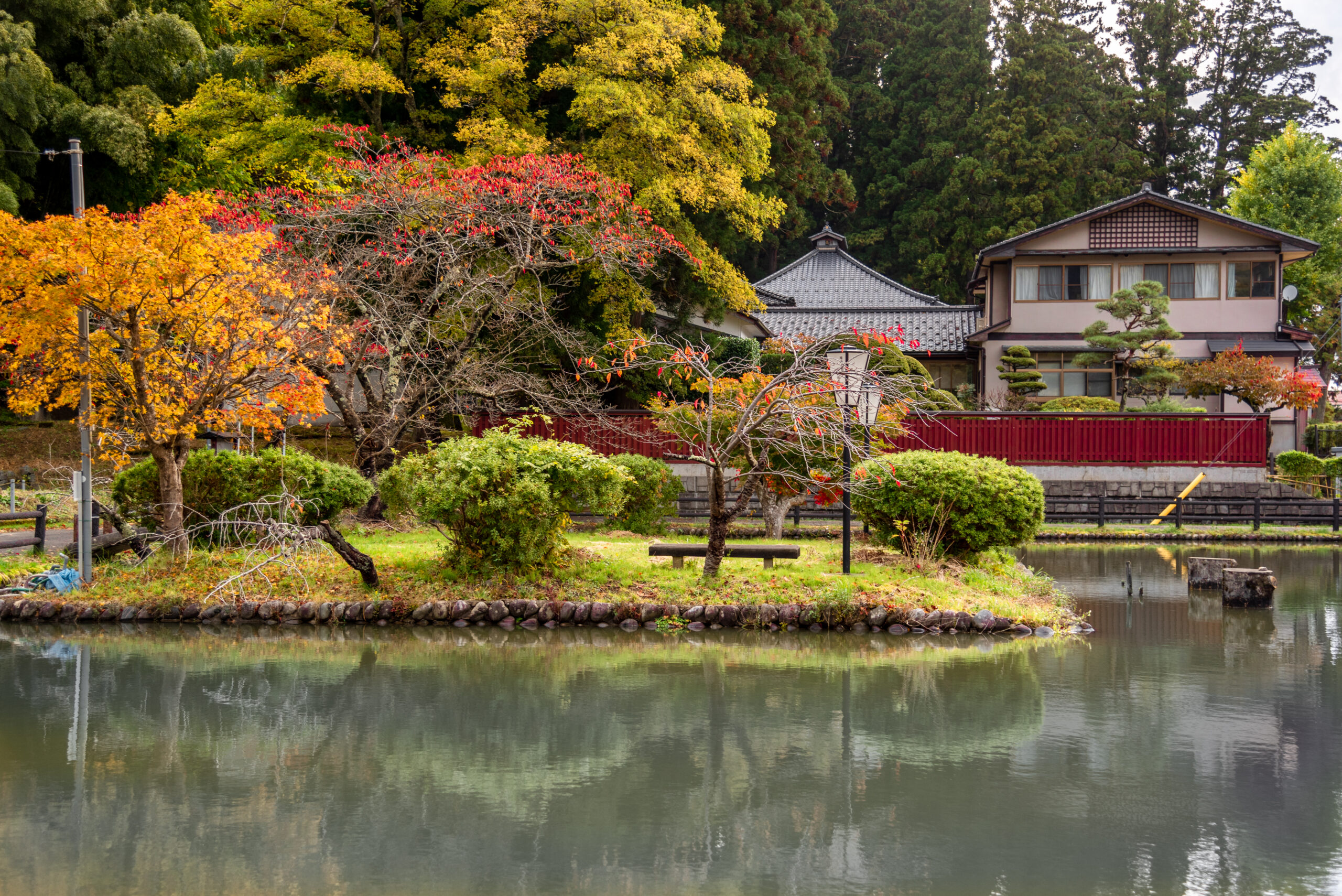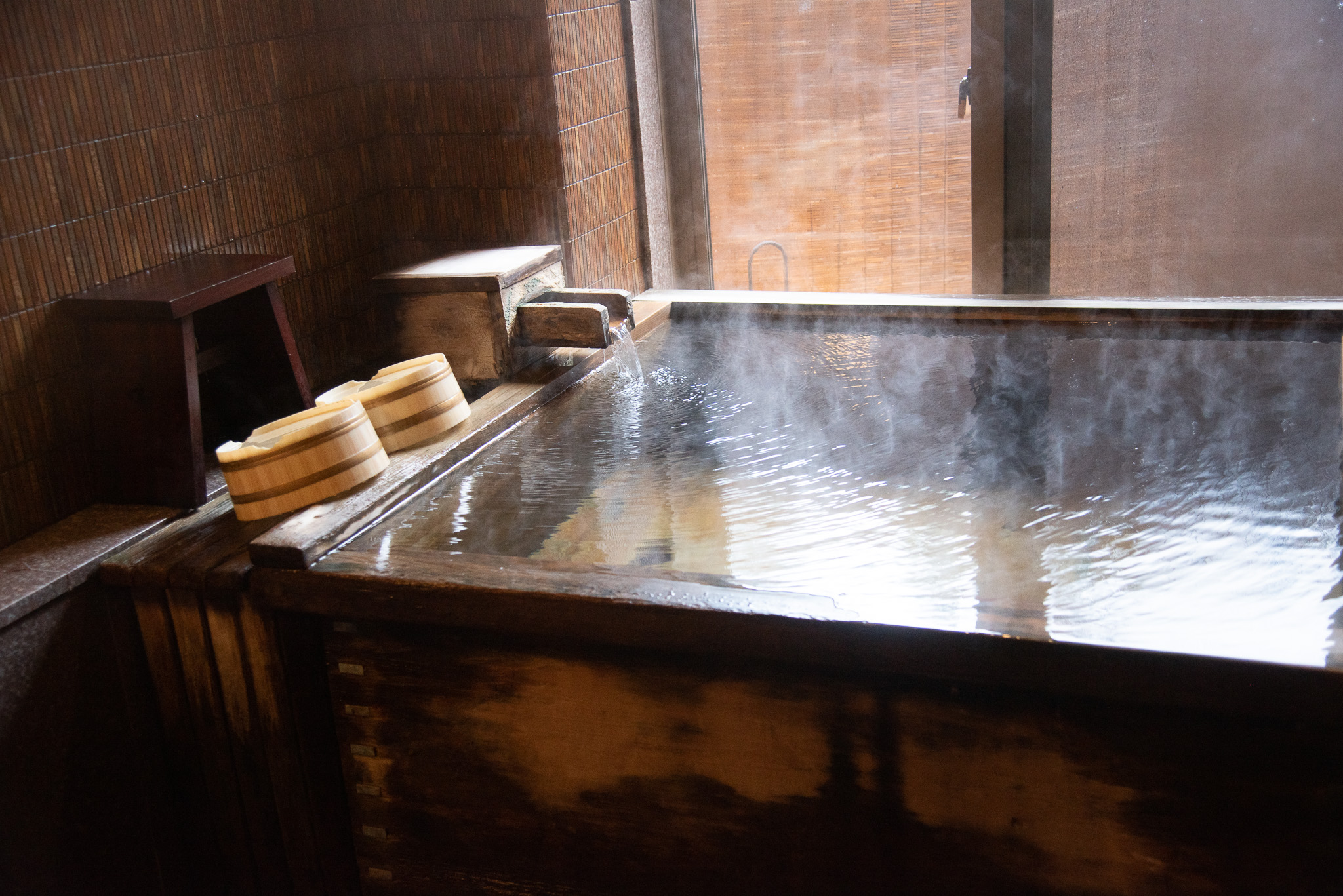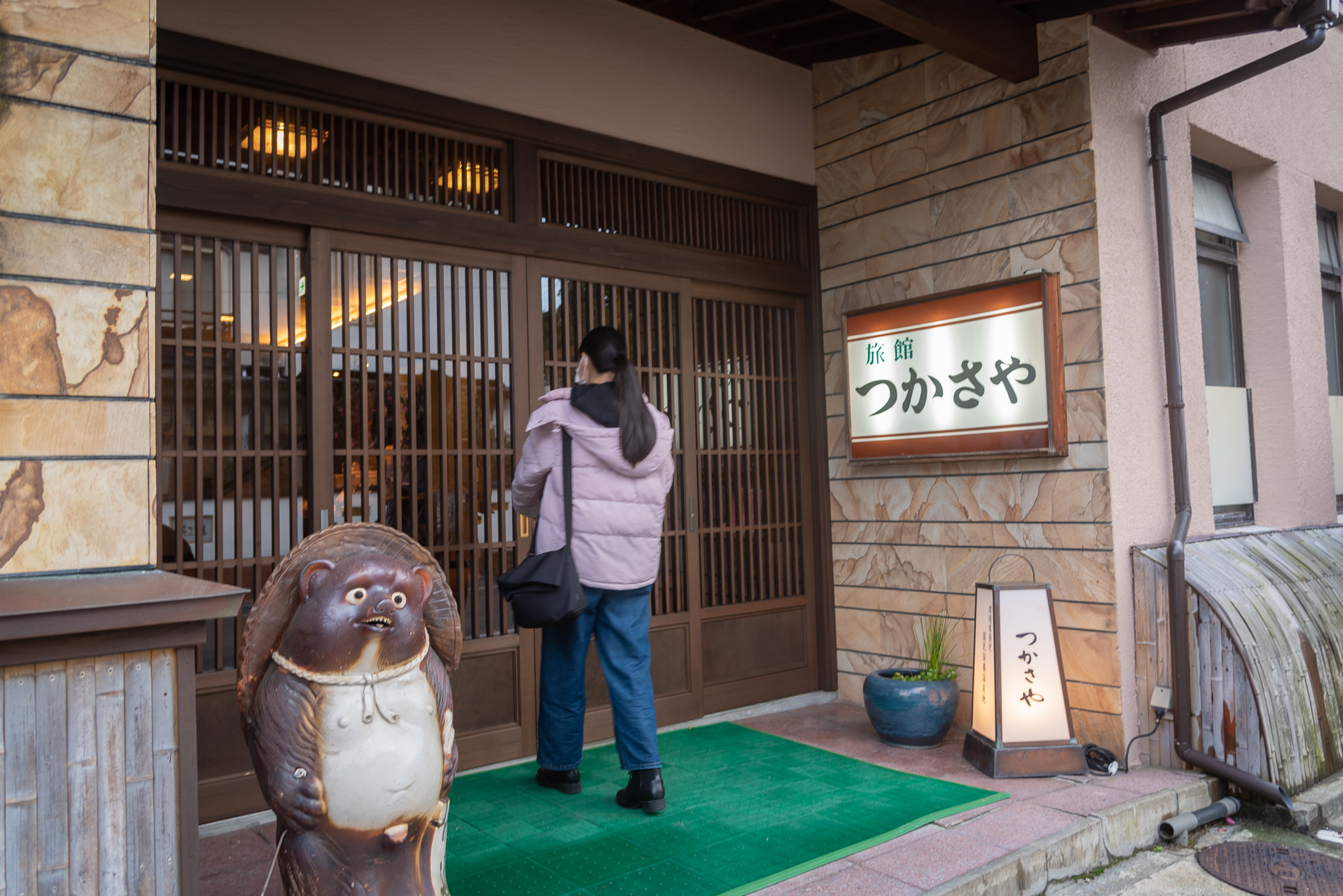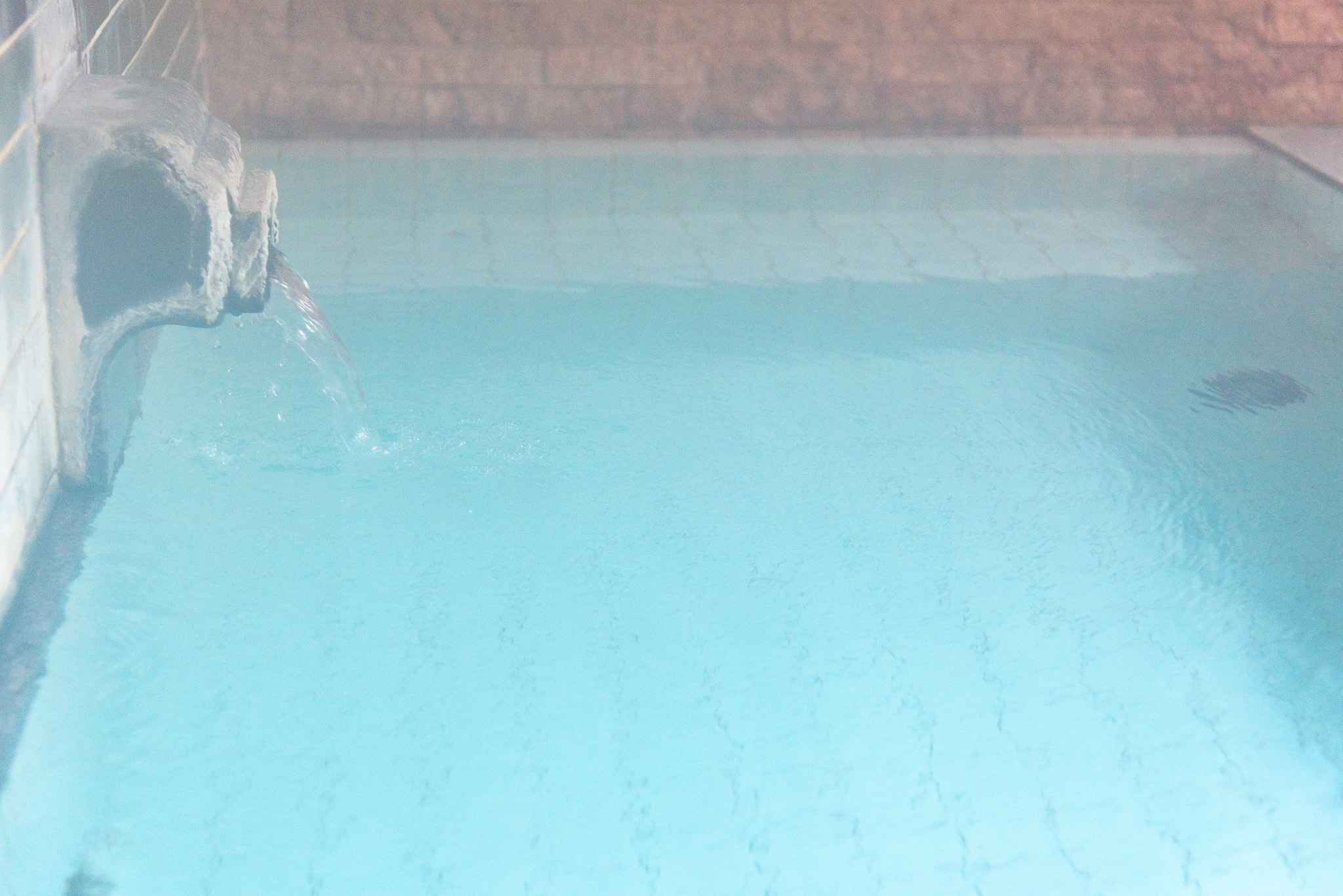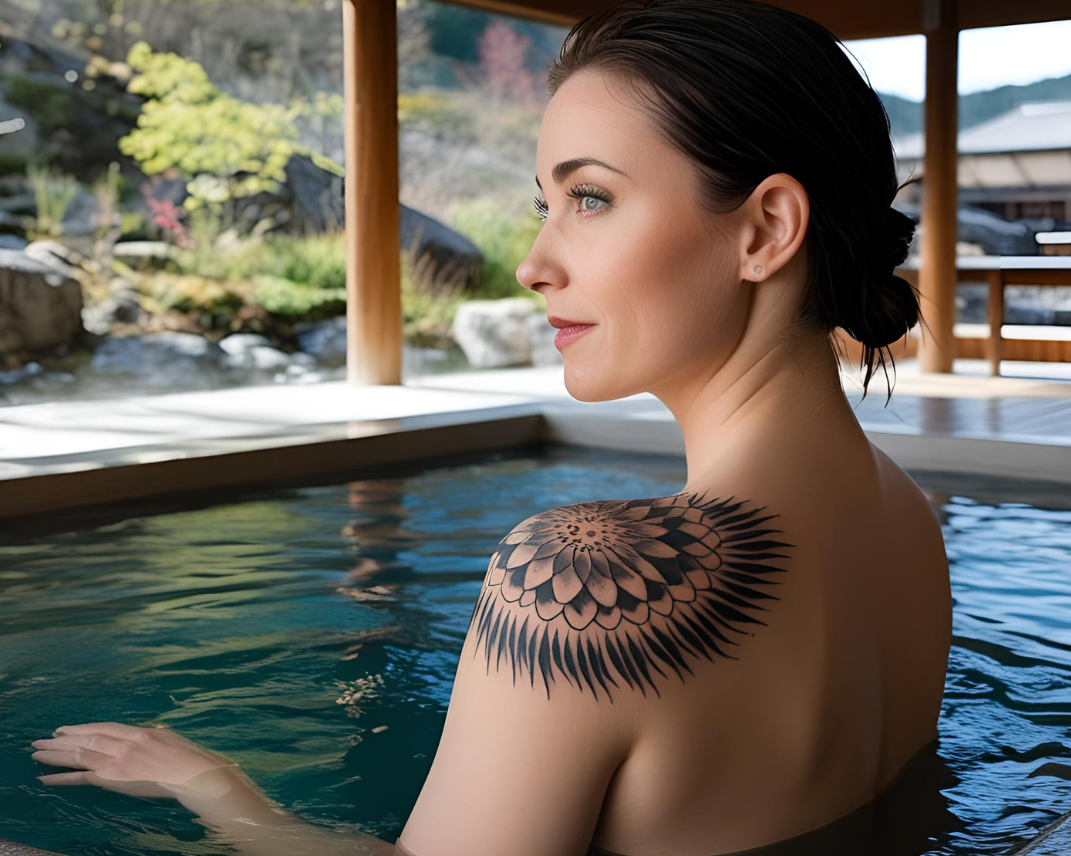
Tattoo-friendly onsen in Tsuruoka city (short list)
Why do tattoos have such a bad image in Japan?
Tattoos have a long and complex history in Japan. Surprisingly, there was a time when they were embraced as a form of fashion. During the Edo period in particular, tattoos became popular among commoners, and a vibrant culture of body art emerged.
At the same time, however, there was also a form of punishment known as irezumi-kei, where tattoos were forcibly applied to criminals to mark their offenses.
Because of this dual history, tattoos in Japan came to symbolize both personal expression and criminality. In the 18th century, the Edo shogunate banned tattooing as punishment, and the Meiji government later imposed strict regulations on tattooing altogether.
From that point on, tattoos became increasingly hidden from public view and began to carry a strong stigma, seen as something negative or undesirable, mostly used by marginal groups (and even violent groups) to signify their will to dissociate from society.
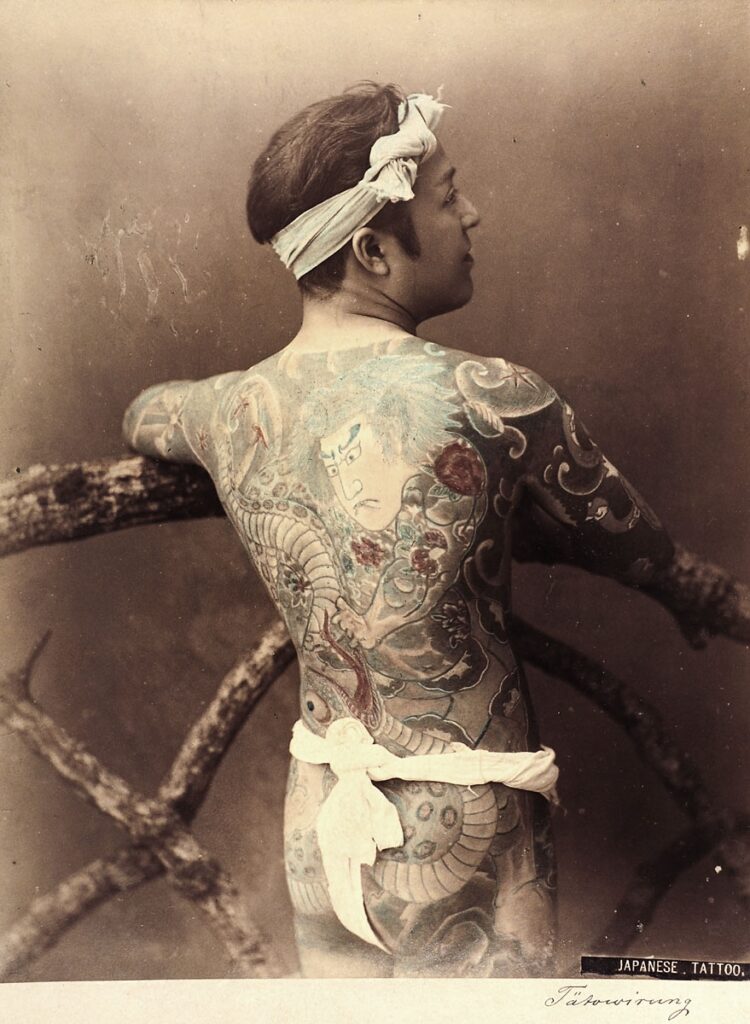
Why, then, are tattoos often prohibited at hot springs and public baths in Japan? One reason is historical—tattoos were once associated with criminal punishment.
This created a lingering negative perception of tattoos that persists today. “Tattoos = criminal/violent person”.
Because hot springs are places where people expose their skin, many facilities still restrict entry to those with tattoos, out of concern for how they might make other guests feel.
However, attitudes toward tattoos are gradually changing across Japan. More and more places now recognize that tattoos are no longer just a symbol of criminality—they’ve become a form of fashion, a means of self-expression, and even a deeply personal or spiritual symbol for many people.
Tsuruoka is no exception. Here too, you’ll find onsen that welcome guests with tattoos. We’d be happy to introduce you to them (non-exhaustive list).
1. Komaginoyu こまぎの湯
This community daytime onsen (no stay plan) is beloved by the local for its “beauty properties” on the skin!
The Komaginoyu hot spring, sourced from 1,500 meters underground features two large communal baths, the facility features a sit-down bath, a Japanese garden-style outdoor bath, and the largest sauna in the prefecture, accommodating up to 30 people. It’s a well-equipped day-use hot spring perfect for soothing your travel fatigue or treating yourself to a daily indulgence.
The source water is heated and diluted, but no circulation or filtration systems are used for the main baths. However, the massage baths are heated and do use circulation and filtration systems.
Properties
Spring Quality
Sodium-calcium sulfate spring
Health Benefits
Effective for: arteriosclerosis, cuts, burns, chronic skin conditions, neuralgia, muscle pain, joint pain, motor paralysis, joint stiffness, bruises, sprains, chronic digestive disorders, hemorrhoids, sensitivity to cold, frozen shoulder, recovery after illness, fatigue recovery, and overall health promotion.
(Due to the high temperature of the source water, it is diluted with cold water.)
- How to visit
-
Operating Hours
6:00 AM – 9:00 PM (Last entry: 8:30 PM)
Closed: Second Wednesday of each monthDay-Use Admission Fees
- Adults (Junior high school and up): ¥650
- Children (Elementary school students): ¥270
- Free for preschool-aged children and younger
※ Mixed bathing is not permitted for elementary school-aged children and older.
Bus stop nearby:
Komaginoyu こまぎの湯 (Tsuruoka City Local Bus C, bus timetable)
2. Yamabushi Onsen “Yupoka” やまぶし温泉ゆぽか
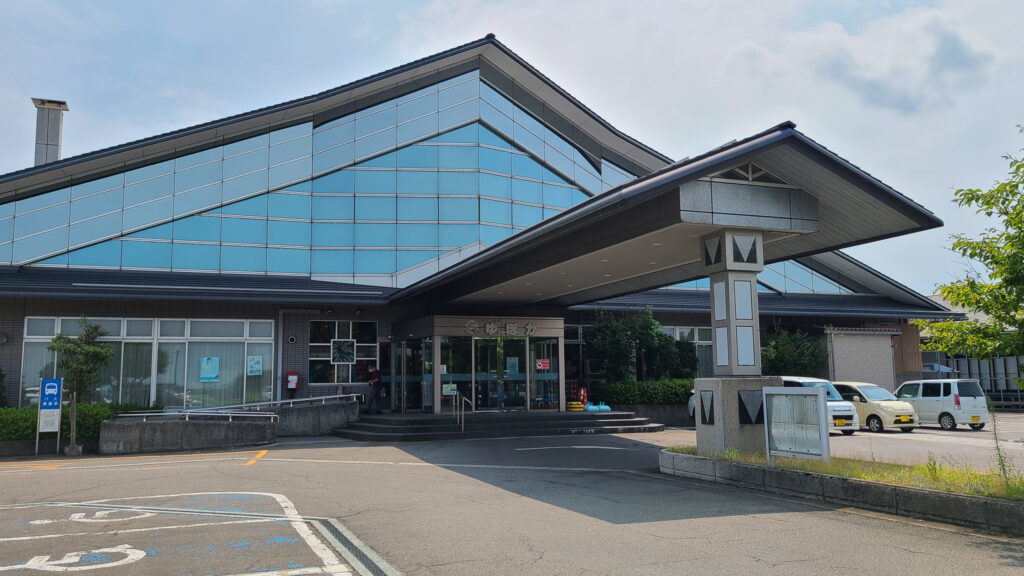
Yupoka is a popular community day-use onsen, cherished by locals for its therapeutic waters. Conveniently located between Mt. Haguro and the Matsugaoka Reclamation Land (the silk farms of the Samurai Silk, a Japan Heritage), it’s the perfect place to unwind after a strenuous hike up Mt. Haguro’s famous stone steps. The facility features multiple rest rooms that can be reserved for a quick nap or a fun karaoke session with friends and family. There’s also a small shop selling groceries and souvenirs, as well as a cozy cafeteria known for its delicious ramen.
Properties
Spring Quality
Sodium-Calcium Chloride Spring
Health Benefits
Minor cuts, burns, chronic skin conditions, weak constitution in children, chronic gynecological disorders, neuralgia, muscle pain, joint pain, frozen shoulder, motor paralysis, joint stiffness, bruises, sprains, chronic digestive issues, hemorrhoids, sensitivity to cold, recovery from illness, fatigue recovery, and general health promotion.
Contraindications (Conditions and symptoms for which bathing should be avoided)
Acute illnesses (especially with fever), active tuberculosis, malignant tumors, serious heart conditions, respiratory failure, renal failure, bleeding disorders, severe anemia, other progressive general illnesses, and pregnancy (especially in the early and late stages).
- How to visit
-
Hours of Operation
Bathing: 6:00 AM – 10:00 PM (Last entry: 9:20 PM)
Cafeteria:- Lunch: 11:00 AM – 2:30 PM
- Dinner (Saturday, Sunday, and holidays): 5:00 PM – 8:30 PM (Last order: 8:00 PM)
Large Hall: 8:00 AM – 5:00 PM
Private Rest Rooms (8 and 12 tatami mats): 9:00 AM – 9:30 PM (Reservation required)
Multi-purpose Room: 9:00 AM – 10:00 PM (Reservation required)
Usage Fees
Bathing- Adults: ¥450, Elementary school children and under: ¥220
Large Rest Hall Ticket
- Adults: ¥200, Children: ¥100
- Private Rest Rooms
- From ¥1,200 (2 hours) to ¥1,600+ ¥250 for every additional 30 minutes
Multi-purpose Room
- 9:00 AM – 5:00 PM: ¥1,000 (per hour)+ ¥500 (for every additional 30 minutes)
- 5:00 PM – 10:00 PM: ¥1,500 (per hour)+ ¥750 (for every additional 30 minutes)
Bus stop nearby: Yupoka (Bus bound for Mt. Haguro: bus timetable)
3. Yaotome 八乙女 in Yura Onsen 由良温泉
At Yaotome, hospitality begins the moment you step into the lobby—echoing the spirit of the eight maidens who once welcomed Prince Hachiko with heartfelt care.
Nestled along the scenic coast of Shonai, our hotel offers sweeping views of the Sea of Japan, where golden sunsets paint the shoreline.
Unwind in their Roman-style open-air bath or soothe your senses in the sauna, all while gazing out at the beachside horizon. Yura Onsen was selected as Japan’s 100 most beautiful sunsets and 100 most beautiful beaches, and Yaotome is the perfect place to admire both these amazing views. More about Yura Onsen
Properties
Spring Quality
Sodium-Calcium Sulfate Hot Spring (Hypotonic, mildly alkaline)
Health Benefits
This mildly alkaline sodium-calcium sulfate hot spring, with a source temperature of 58°C, is known to support relief from chronic muscle and joint pain or stiffness—including conditions like arthritis, neuralgia, and lower back pain—as well as aid in recovery from bruises and sprains. It also promotes circulation, helps with cold sensitivity, digestive discomfort, mild hypertension, diabetes, and high cholesterol. Guests may also find relief from mild asthma, hemorrhoid pain, and stress-related issues such as insomnia or low mood. The spring further supports recovery during convalescence, fatigue relief, skin hydration, and overall health and wellness.
- How to visit
-
This onsen doesn’t offer daytime bathing services, but welcomes guests from all around the world to stay for the night! Here’s their website (in Japanese) : http://yaotome.in.net/; you can also book on Booking.com.
Bus stop nearby: Yura Onsen (bus bound for Atsumi Onsen: bus timetable)
4. Book a private bath “kashikiri-buro” 貸切風呂 in Yutagawa Onsen 湯田川温泉
Surrounded by lush nature and steeped in warm local hospitality, the historic hot spring village of Yutagawa Onsen welcomes visitors year-round. With a history spanning over 1,300 years, Yutagawa was officially designated as a “National Hot Spring Health Resort” by Japan’s Ministry of the Environment in 2001—a recognition given to hot spring areas with exceptional waters, serene natural settings, and well-maintained facilities.
Yutagawa is best known as a traditional “toji” (therapeutic retreat) destination, where visitors come not only to relax but to heal. According to legend, the spring was discovered in the year 712 when a wounded white heron healed its injuries in the waters—earning Yutagawa the poetic nickname Shirasagi no Yu (Heron’s Bath). Its sulfate-rich waters, gushing at an impressive 1,000 liters per minute, are particularly effective for treating arteriosclerosis, cuts, burns, and other skin ailments. The spring is also said to have calming effects and may help lower blood pressure.
Yutagawa is also home to a rare cultural tradition called Ushitoji—a midsummer ritual where people bathe on the Day of the Ox in late July, believed to ensure good health for the coming year. As part of this tradition, a purification ceremony is held at the sacred Yuzusame Shrine, where the local Yutagawa Onsen Kagura (sacred Shinto music and dance) is performed both at the shrine and at select inns by reservation.
Most ryokan in Yutagawa Onsen are cozy, family-run inns that offer private bathing options known as kashikiri-buro (貸切風呂). These intimate baths can be reserved on the spot, allowing you and your companions to enjoy the healing waters of Yutagawa in complete privacy—no need to worry about tattoos or sharing the space with strangers. Not every ryokan offers this service, so here’s a list of those that do:
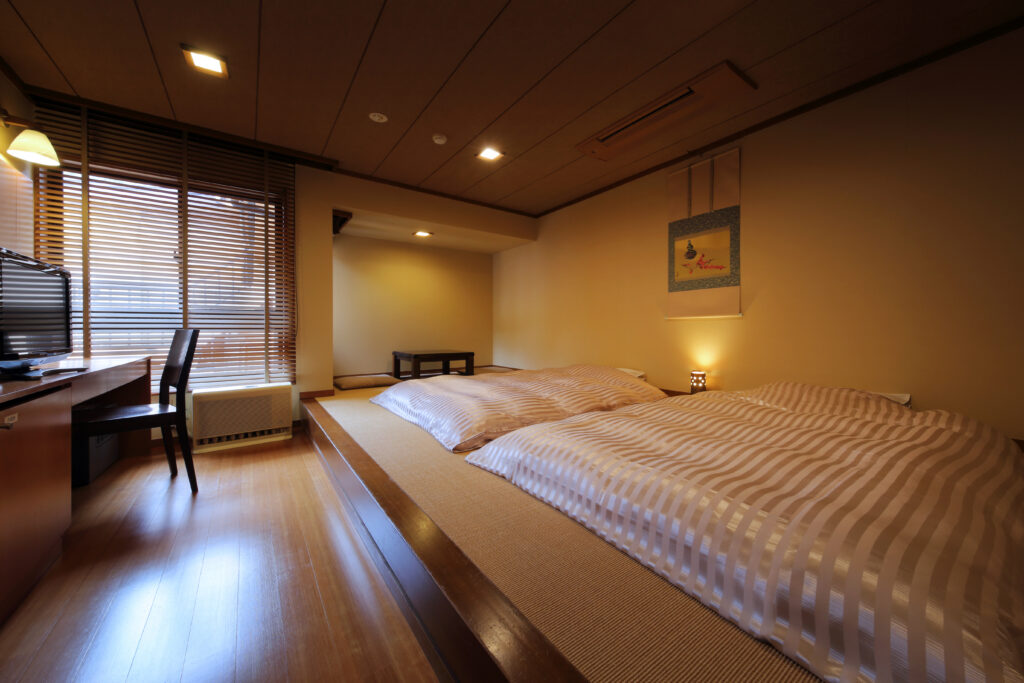
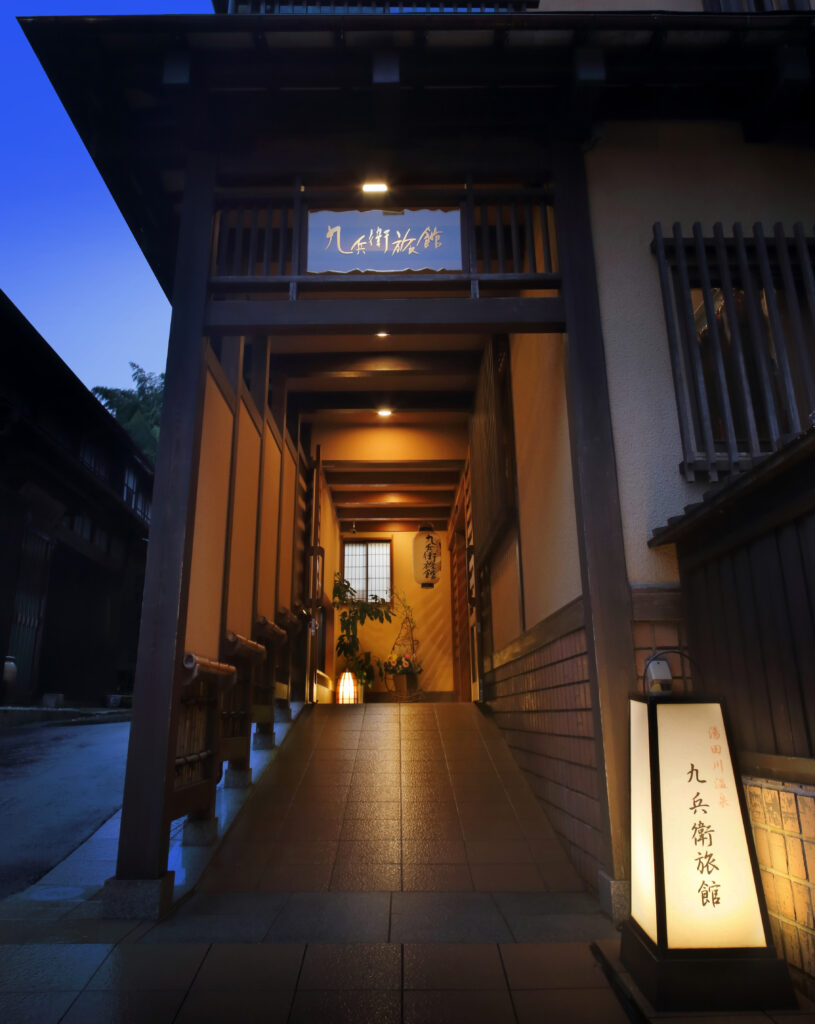
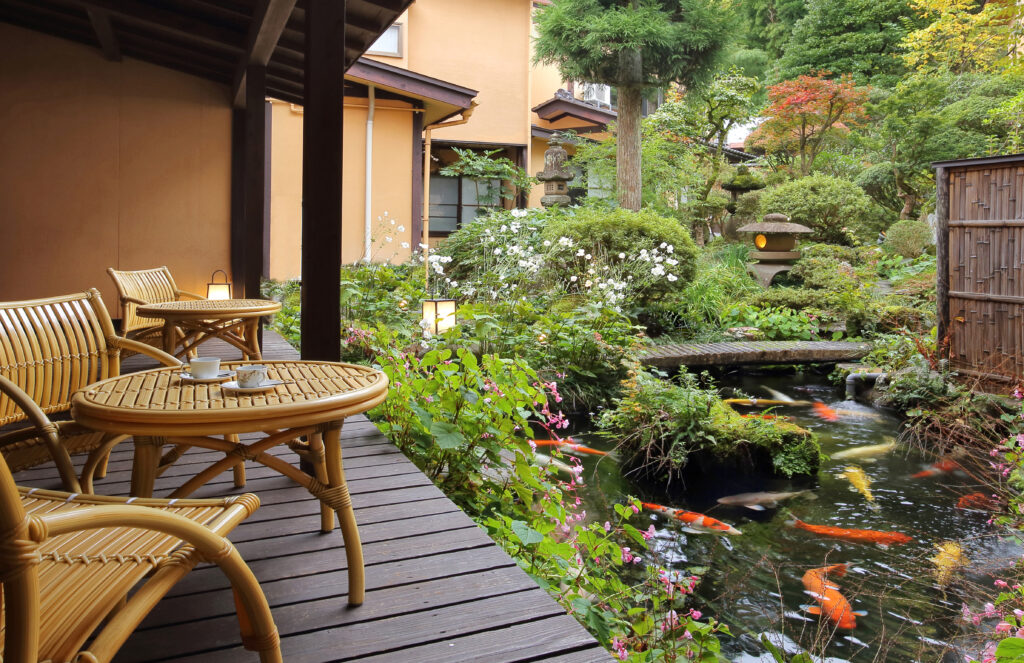
-Kuhe : a luxurious ryokan that allows tattooed guests to book its kashikiri-buro but not its communal bath. English website
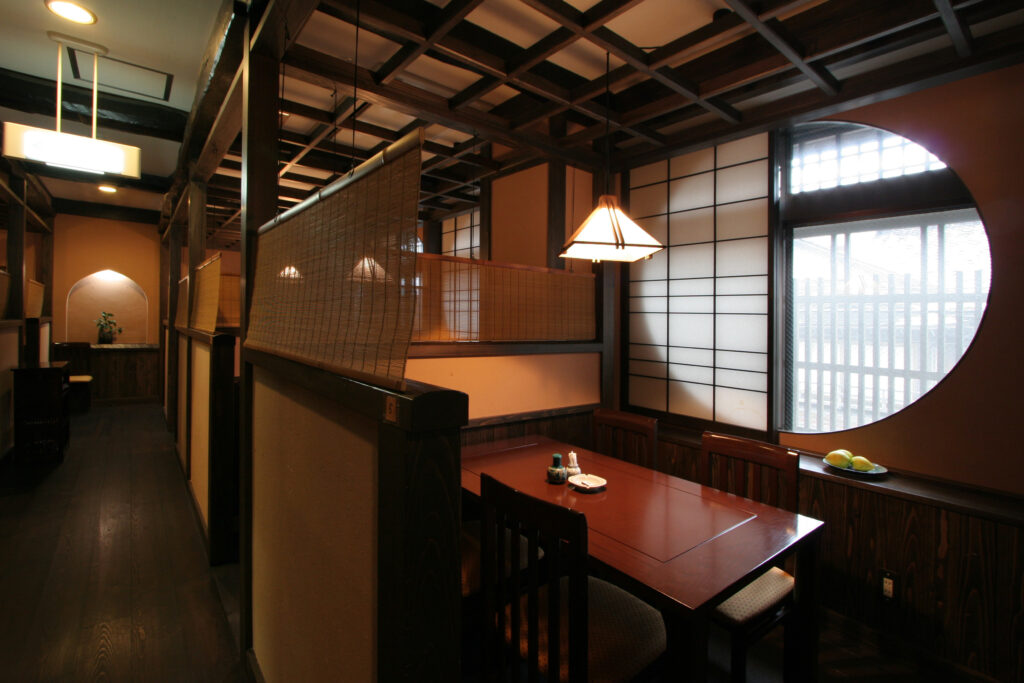
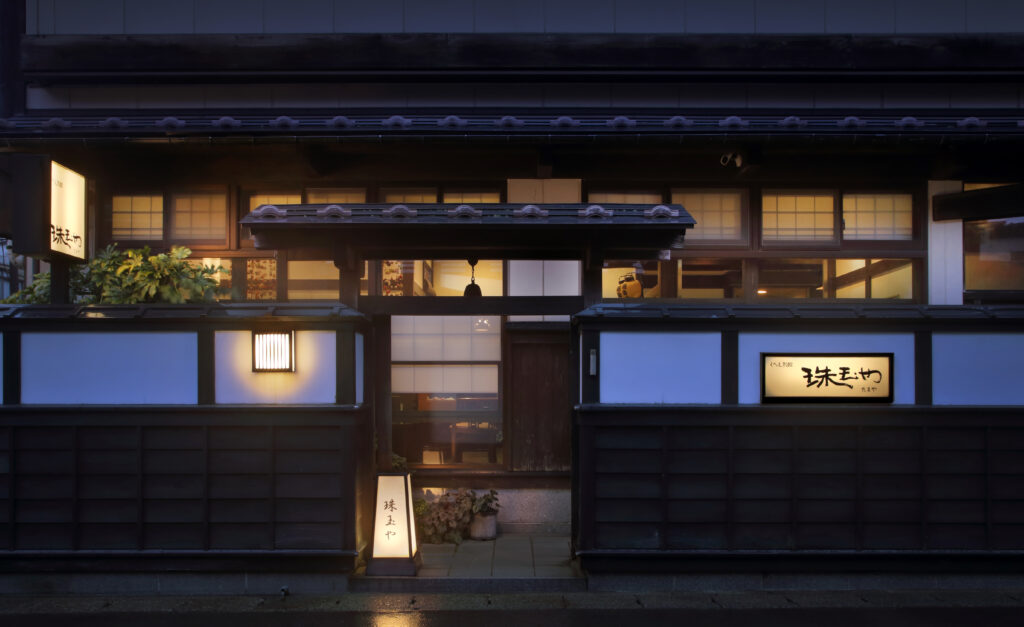
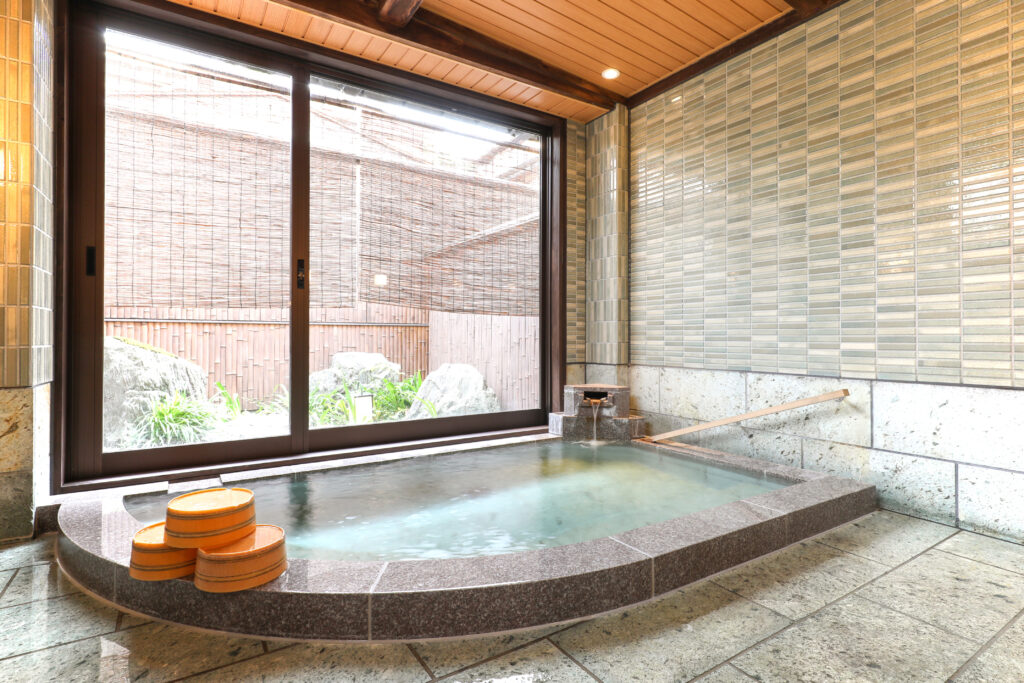
-Tamaya : a cozy ryokan that possesses three kashikiri-buro, some of them giving the best views on the Shonai plains. English website
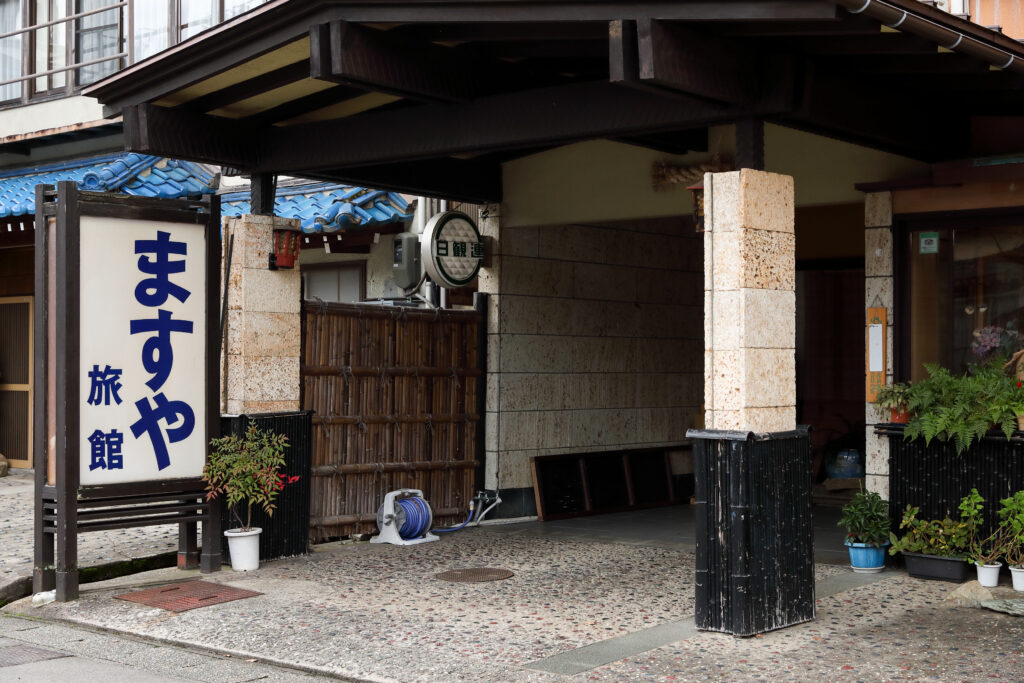
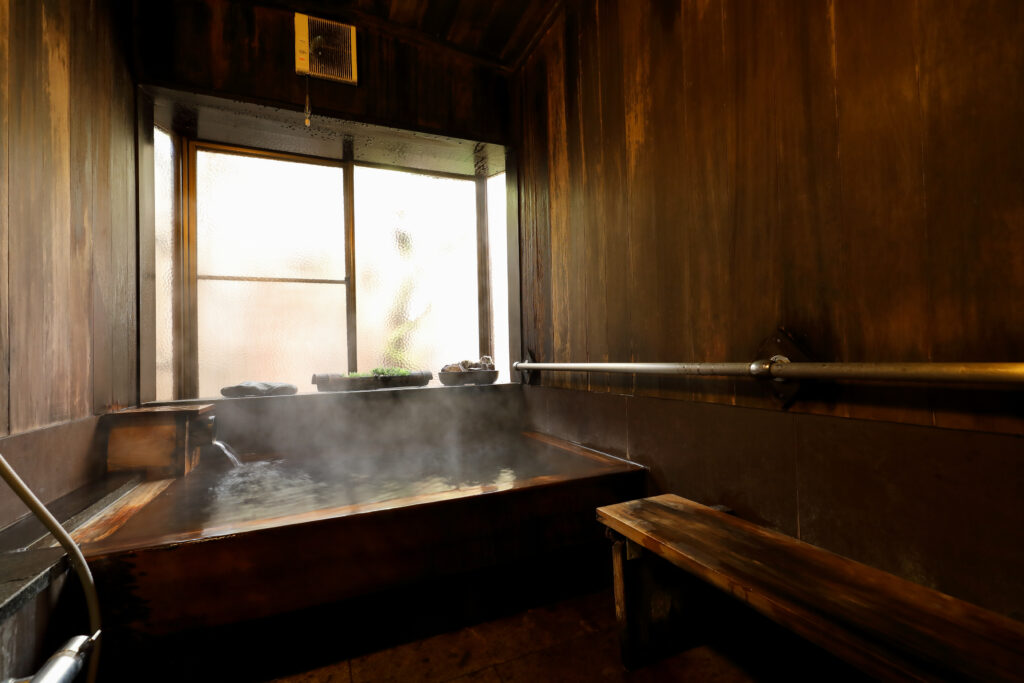
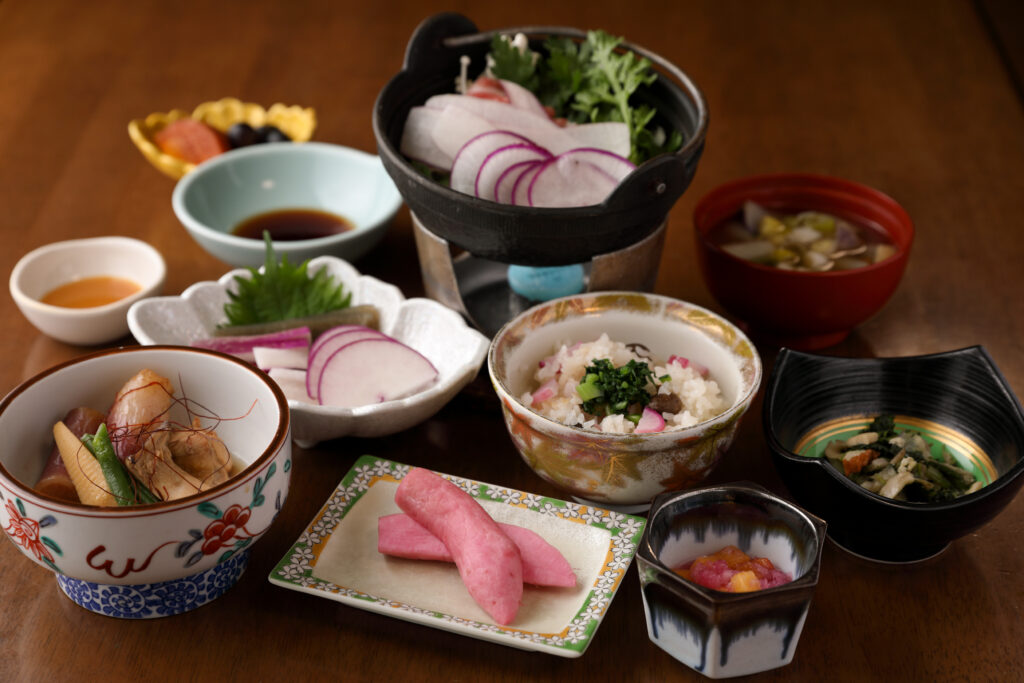
-Masuya : a comfortable, stylish ryokan with three kashikiri-buro and a beautiful chanoma lounge. English website
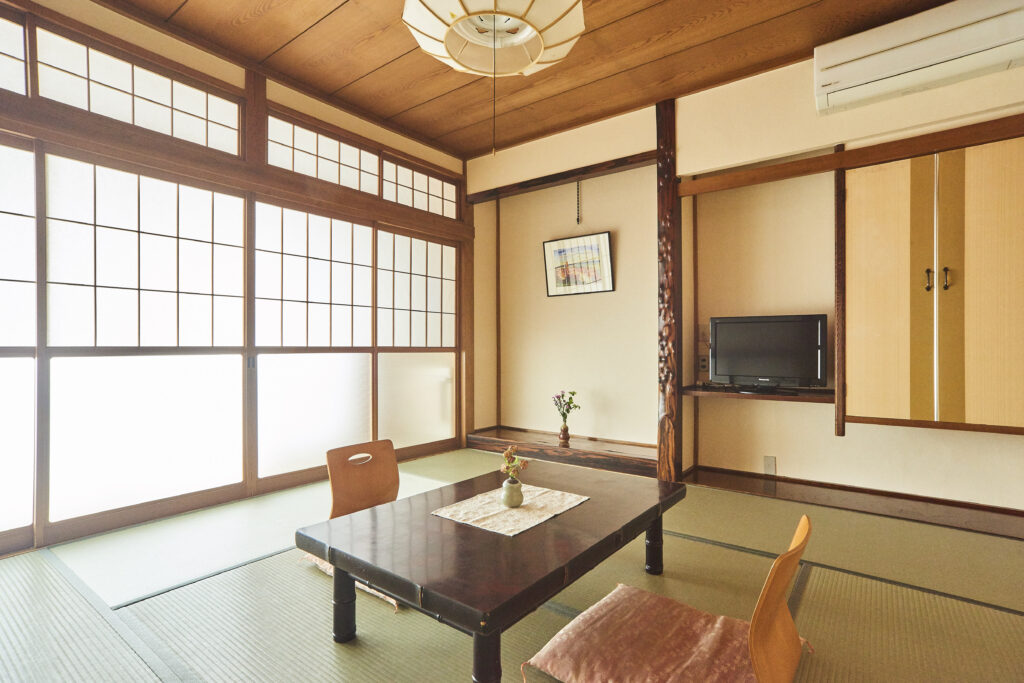
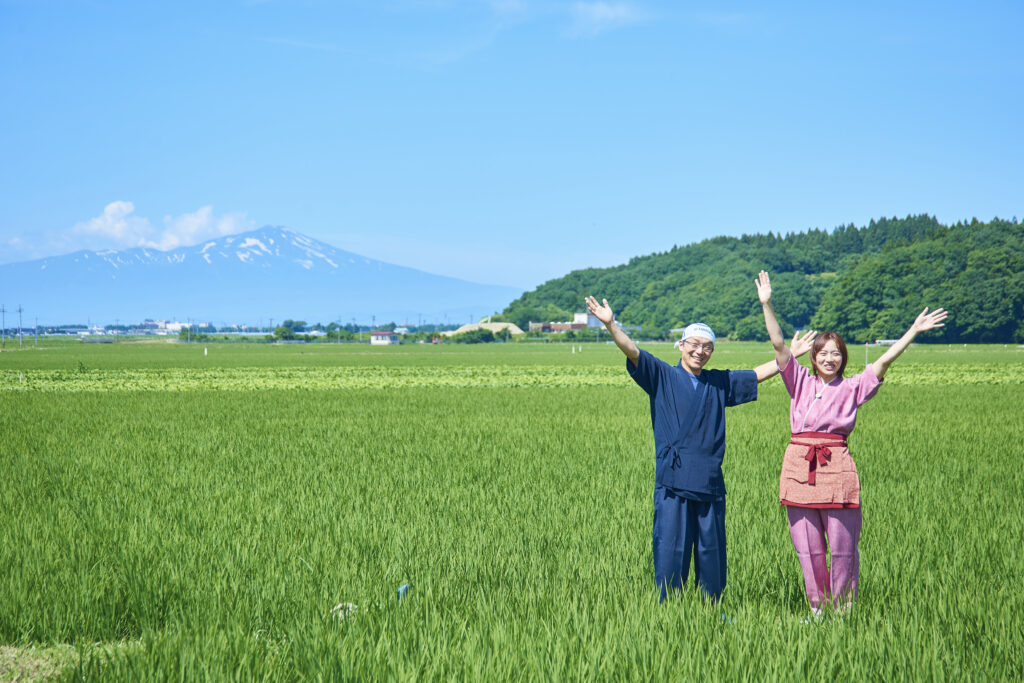
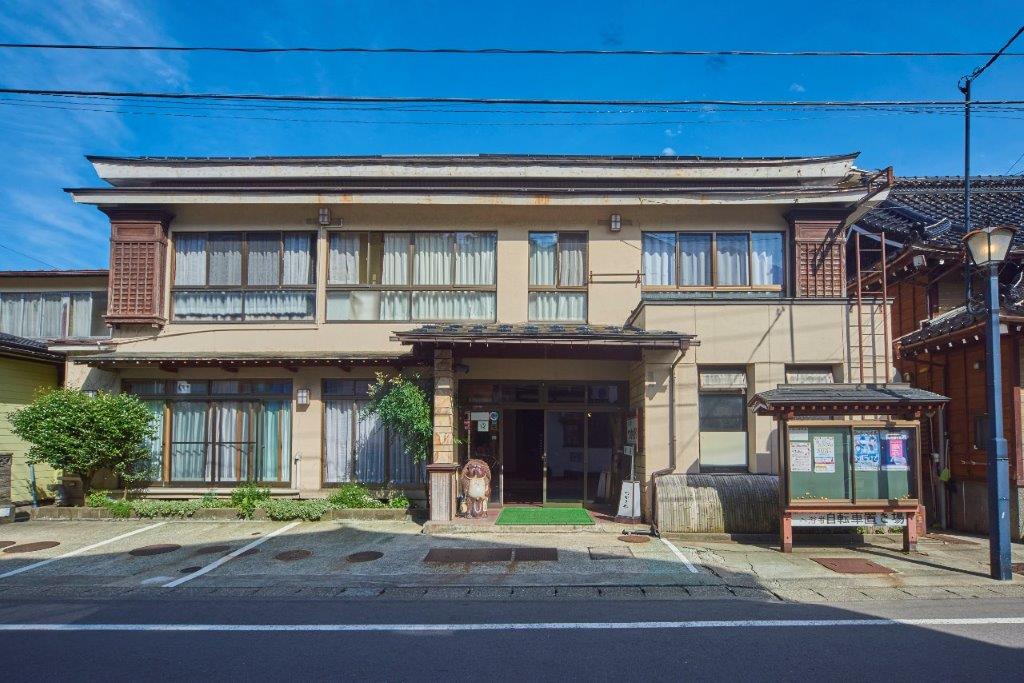
-Tsukasaya : a heartwarming, cozy ryokan with the best local sake tasting dinners that also has two kashikiri-buro. English website
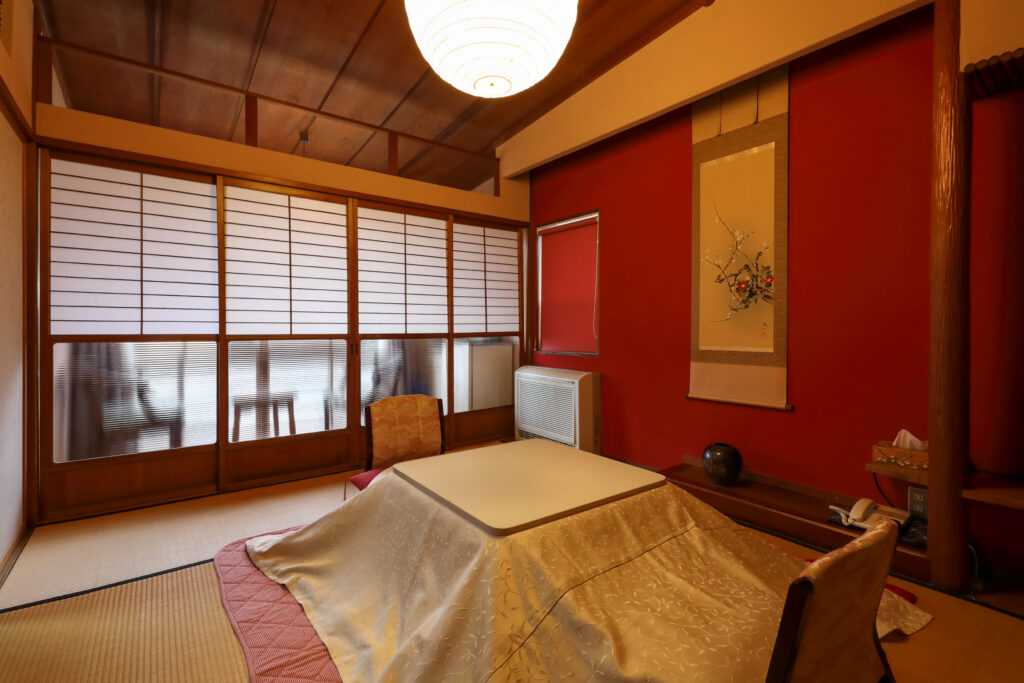
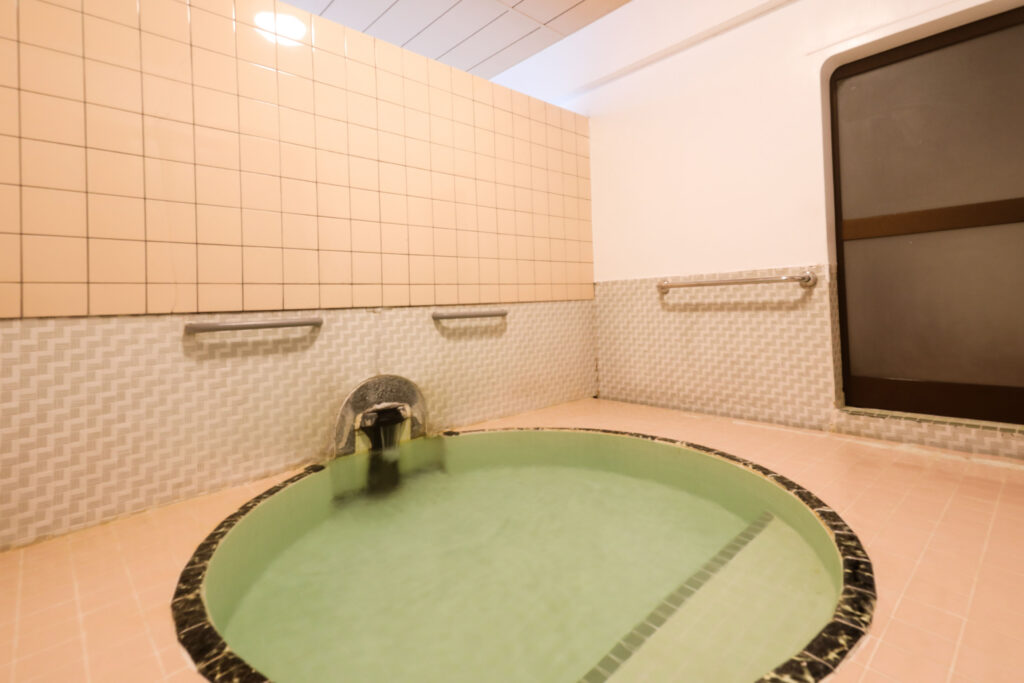
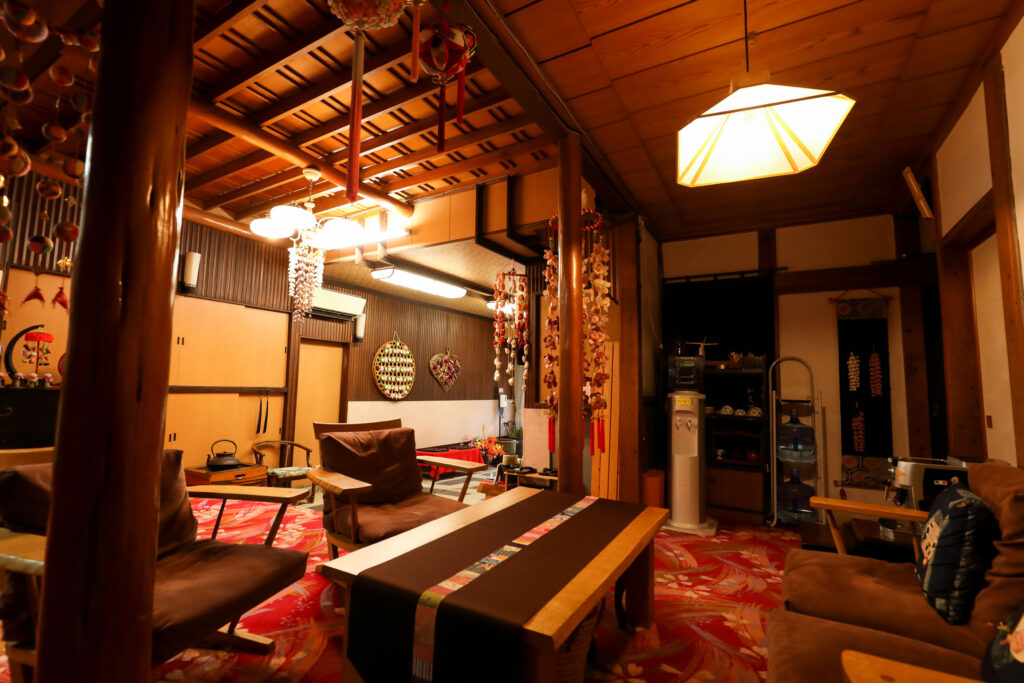
-Ridayu : another cozy ryokan that possesses a kashikiri-buro. Ridayu Ryokan’s motto? “Pure hot spring water, locally sourced cuisine, and heartfelt hospitality — these are what make us special.”
- How to go to Yutagawa Onsen
-
Take the bus bound for Yutagawa Onsen from Tsuruoka Station or S-MALL Bus Terminal, get off the bus at Yutagawa Onsen (bus timetable)
Thank you for reading our guide to tattoo-friendly onsen and ryokan in Tsuruoka. While some facilities may still have restrictions, we hope this information helps you find a warm welcome and a relaxing soak during your stay. Tsuruoka is a place of deep hospitality, tradition, and healing waters—and we hope your time here is as memorable as it is rejuvenating.

